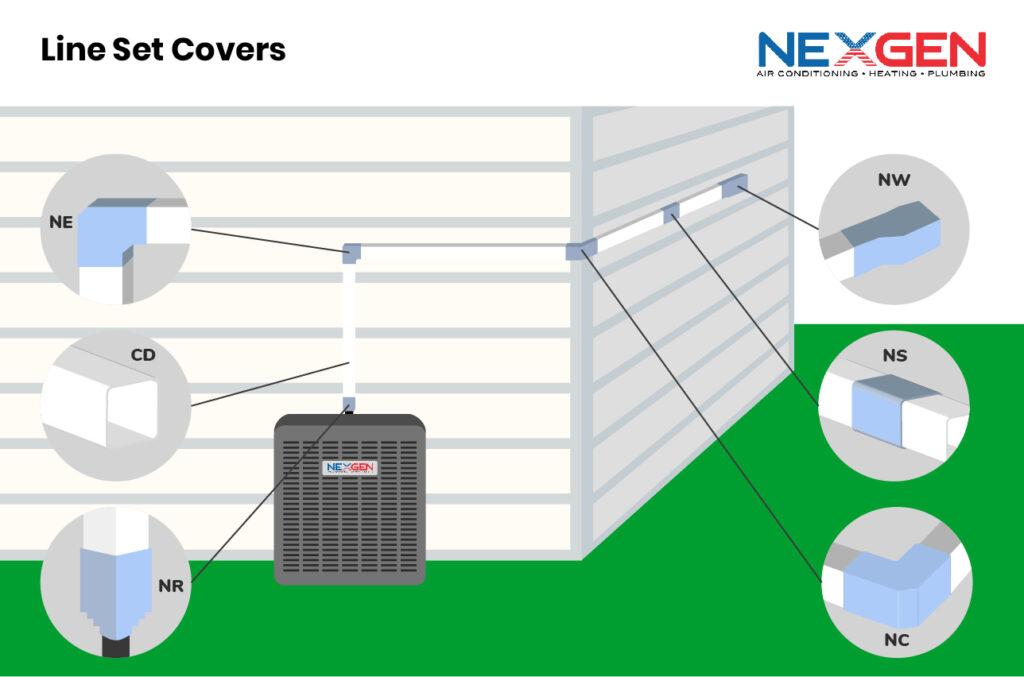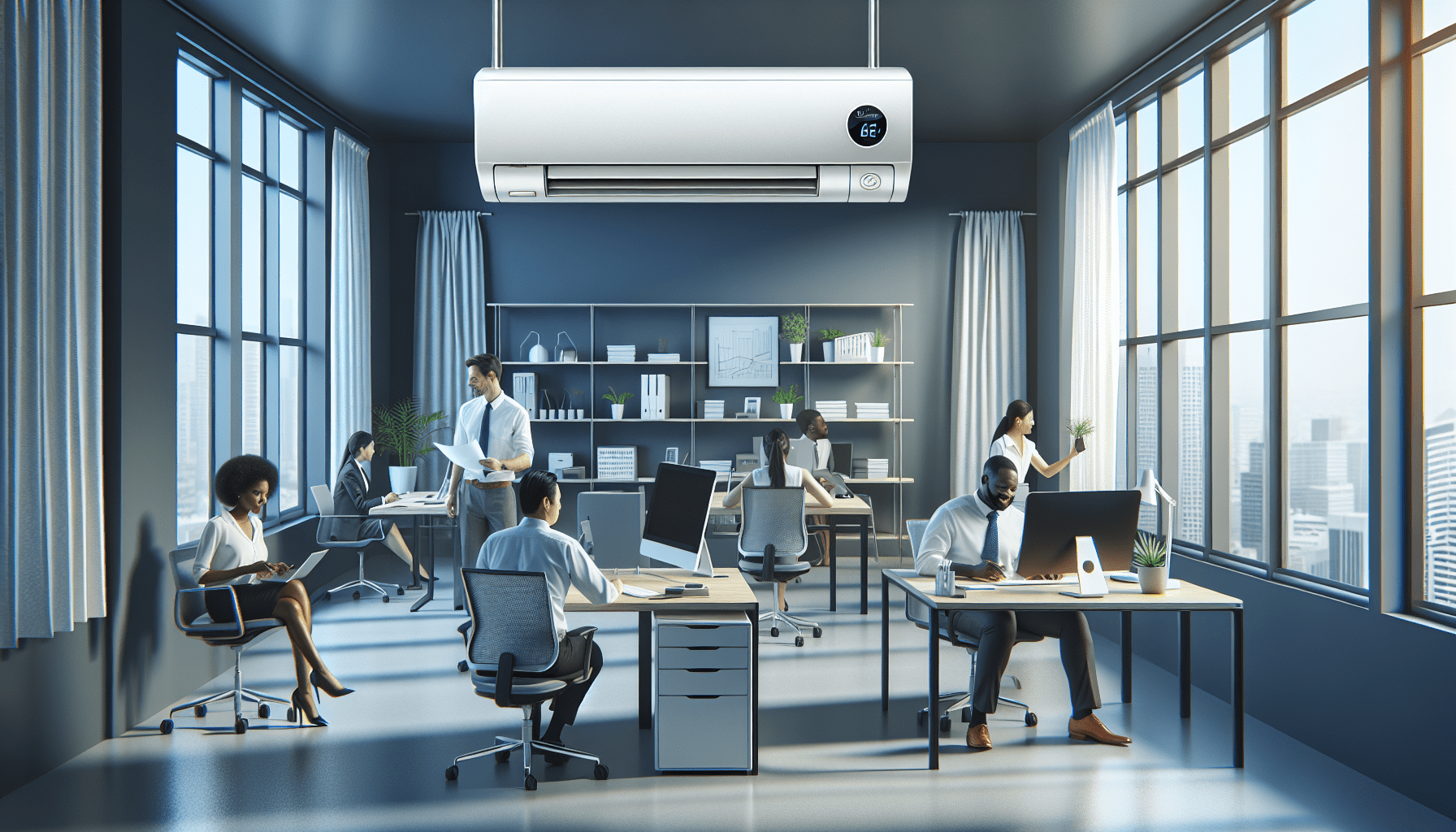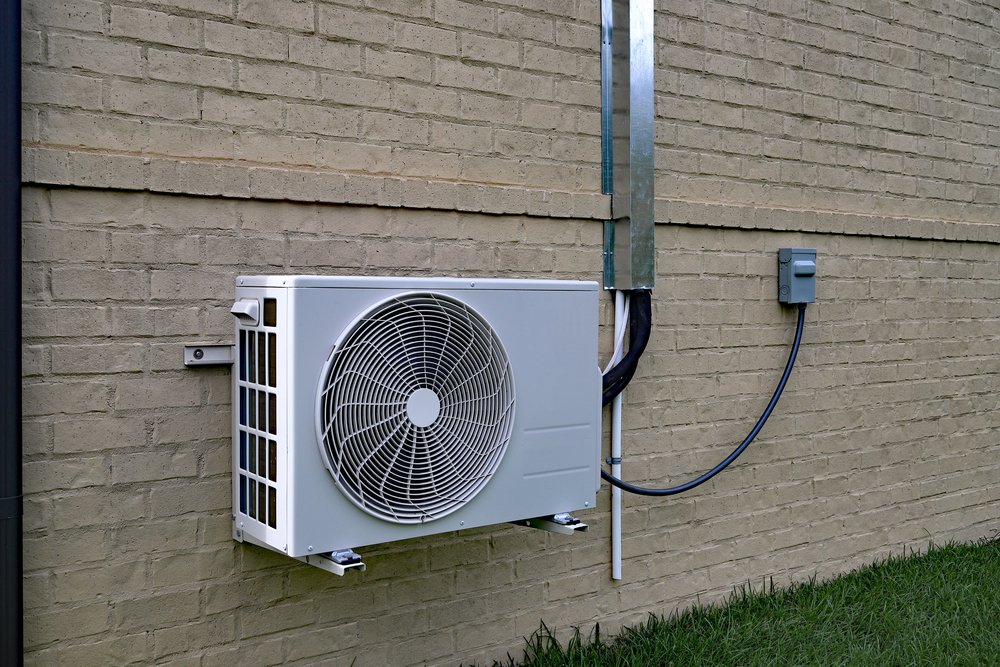In the pursuit of creating a comfortable and productive work environment, it is essential to consider the dos and don’ts of office cooling with Mini Split AC Systems. By understanding the best practices and avoiding common pitfalls, you can ensure optimal cooling efficiency and employee satisfaction. This article will explore the key factors to consider when using Mini Split AC Systems in an office setting, offering valuable insights and tips to enhance the cooling experience for everyone involved.
Understanding Mini Split AC Systems
Basic concept of mini split AC systems
Mini split AC systems, also known as ductless air conditioning systems, are a popular choice for cooling in both residential and commercial settings. Unlike traditional central air conditioning systems, mini split AC systems do not require ductwork to distribute cool air. Instead, they consist of two main components: an outdoor unit and one or more indoor units. The outdoor unit houses the compressor and condenser, while the indoor units deliver cooled air directly into the space. This allows for more flexibility in installation and zoning.
Components and operations of mini split AC systems
A mini split AC system typically consists of three main components: the outdoor unit, indoor unit(s), and the refrigerant lines that connect them. The outdoor unit contains the compressor, which is responsible for pressurizing and circulating the refrigerant. It also houses the condenser, which releases heat absorbed from the indoor air. The indoor unit(s), usually mounted on the wall or ceiling, contain the evaporator coil, fan, and air filters. The evaporator coil cools and dehumidifies the air, while the fan circulates it.
The operation of a mini split AC system involves the circulation of refrigerant between the outdoor and indoor units. The compressor in the outdoor unit pressurizes the refrigerant, which then flows through the refrigerant lines to the indoor unit(s). Inside the indoor unit(s), the refrigerant undergoes a heat exchange process, absorbing heat from the indoor air and releasing it outside. The cooled air is then distributed back into the space, creating a comfortable indoor environment.
Benefits of using mini split AC systems in an office setting
Mini split AC systems offer several benefits when used in an office setting. Firstly, their flexibility in installation allows for more precise zoning, enabling different areas of the office to be cooled independently. This is especially advantageous in larger office spaces where cooling needs may vary. Additionally, mini split AC systems operate quietly, creating a comfortable and conducive working environment. They also offer energy efficiency, as the absence of ductwork eliminates the energy losses associated with traditional central air conditioning systems. Finally, mini split AC systems can improve indoor air quality, as they often come with advanced filtration systems, reducing dust, allergens, and other airborne contaminants.
Choosing the Right Mini Split AC System
Determining the necessary cooling capacity
One crucial factor to consider when choosing a mini split AC system for your office is the cooling capacity required. Determining the correct cooling capacity is essential to ensure optimal cooling and energy efficiency. To calculate the cooling capacity needed, the square footage of the office space, insulation levels, and the number of occupants should be taken into account. It is recommended to consult an HVAC professional to perform a load calculation and help determine the appropriate cooling capacity for your office.
Consideration of energy efficiency ratings
Another important aspect to consider when selecting a mini split AC system is its energy efficiency rating. Energy efficiency is an essential factor as it contributes to lower energy consumption and reduced utility costs. Look for units with high Seasonal Energy Efficiency Ratio (SEER) ratings, as they indicate superior energy efficiency. Additionally, pay attention to Energy Star certified models, as they meet strict energy efficiency guidelines set by the Environmental Protection Agency.
Features to look for in a mini split AC system
When choosing a mini split AC system, consider specific features that can enhance comfort and convenience in your office. Look for units with programmable thermostats, which allow for automated temperature adjustments based on occupancy patterns. This can help optimize energy usage and maintain a comfortable environment during office hours. Additionally, consider units with advanced air filtration systems to improve indoor air quality. Some models may also offer additional features such as wireless remote control, sleep modes, and timers, which can further enhance user experience.

This image is property of nexgenairandplumbing.com.
Proper Installation of Mini Split AC Systems
Importance of professional installation
Proper installation of a mini split AC system is vital to ensure optimal performance and longevity. Hiring a professional HVAC technician with expertise in mini split AC systems is highly recommended. They will have the knowledge and experience to assess the specific requirements of your office space and perform a correct installation. Professional installation also ensures compliance with local building codes and regulations, providing peace of mind.
Ideal placement of indoor and outdoor units
During installation, the placement of both the indoor and outdoor units should be carefully considered. Indoor units should be positioned strategically to ensure optimal air distribution and coverage. They should be installed away from direct sunlight, heat sources, and areas with high humidity. Outdoor units should be placed in a well-ventilated area, away from obstructions such as bushes or debris. Proper placement of both units contributes to efficient operation and maintenance accessibility.
Proper sizing and routing of refrigerant lines
Proper sizing and routing of refrigerant lines are crucial for the performance and efficiency of the mini split AC system. Refrigerant lines that are too long or too short can result in inadequate cooling or system inefficiencies. The sizing of the refrigerant lines should be determined based on the manufacturer’s specifications and the specific requirements of the office space. Additionally, ensure that the lines are properly insulated to minimize heat gain or loss.
Regular Maintenance of Mini Split AC Systems
Importance of regular system check-ups
Regular maintenance of your mini split AC system is essential for its optimal performance and longevity. Engaging in routine check-ups helps identify and address potential issues before they escalate into major problems. It is recommended to have a professional HVAC technician inspect your system at least once a year. They can perform comprehensive maintenance tasks, including cleaning the coils, inspecting electrical components, and checking refrigerant levels, ensuring that your system operates at its best.
Cleaning and replacement of filters
Regularly cleaning and replacing the filters in your mini split AC system is a simple yet crucial maintenance task. Dirty filters can restrict airflow, reducing the system’s efficiency and potentially damaging components. It is advisable to clean or replace the filters every one to three months, depending on the level of dust and contaminants in your office environment. Consult the manufacturer’s guidelines for specific instructions on filter maintenance.
Signs your mini split AC may need maintenance
Being aware of the signs that your mini split AC system may need maintenance can help you address issues promptly and prevent further damage. Look out for signs such as reduced cooling capacity, unusual noises, leaks, or unpleasant odors. If you notice any of these symptoms, it is advisable to schedule a maintenance visit with a professional technician as soon as possible.

This image is property of efficientminisplits.com.
Troubleshooting Common Mini Split AC Problems
Recognizing signs of possible system issues
As a user of a mini split AC system, it is important to be able to recognize signs that may indicate potential problems. Some common signs include the system not turning on or not cooling effectively, excessive noise during operation, and refrigerant leaks. If you notice any of these signs, it is essential to address the issue promptly to prevent further damage and ensure the comfort of your office environment.
Dealing with common troubles – leaking, not cooling, etc.
Dealing with common troubles with a mini split AC system can often be resolved through simple troubleshooting steps. For example, if you notice a refrigerant leak, it is important to shut off the system and address the leak immediately. Leaking refrigerant not only affects the system’s cooling capacity but can also be harmful to the environment. If the system is not cooling effectively, check if the air filters are dirty and clean or replace them if necessary. Additionally, ensure that the thermostat settings and fan speeds are correctly adjusted.
When to call a professional for help
While some minor issues can be resolved through troubleshooting, it is important to know when to call a professional for assistance. If you are unable to identify the root cause of a problem or if the issue persists after attempting troubleshooting steps, it is advisable to consult a professional HVAC technician. They have the expertise to diagnose and address complex issues and can ensure that your mini split AC system is properly repaired.
Maximizing Energy Efficiency
Proper use of thermostat settings
To maximize energy efficiency with your mini split AC system, it is important to use the thermostat settings appropriately. Set the temperature to a comfortable level, avoiding unnecessarily low settings that increase energy consumption. Take advantage of programmable thermostats and adjust the temperature based on occupancy patterns. During business hours, set the thermostat to a slightly higher temperature, and program it to lower before employees arrive and raise after they leave. This helps conserve energy without compromising comfort.
Benefits of programmable thermostats
Utilizing programmable thermostats with your mini split AC system offers several benefits. They allow for automated temperature adjustments based on predetermined schedules, ensuring a comfortable environment during office hours and energy savings during non-working hours. Programmable thermostats also provide the flexibility to override the schedule temporarily, accommodating unexpected changes in occupancy or weather conditions. By optimizing temperature settings, programmable thermostats contribute to enhanced energy efficiency and cost savings.
Proactive measures to conserve energy
In addition to proper thermostat settings, there are proactive measures you can take to conserve energy when using a mini split AC system. Encourage employees to practice energy-saving habits, such as closing blinds or curtains during peak sunlight hours to reduce heat gain. Ensure that windows and doors are properly sealed to minimize air leakage. Regularly clean the outdoor unit’s condenser coils to maintain optimal heat exchange efficiency. Educate employees about energy-saving practices to promote a culture of sustainability in the office.

This image is property of stylebyemilyhenderson.com.
Ensuring Worker Comfort
Balancing cooling needs with personal comfort
Ensuring worker comfort in the office requires finding the right balance between cooling needs and personal comfort. While it is important to maintain a comfortable temperature for productivity, individual preferences may vary. Provide employees with the ability to adjust temperature settings within a reasonable range to accommodate personal comfort. This can be achieved through zoned cooling with multiple indoor units, allowing different areas to be cooled differently based on preferences.
Dealing with uneven cooling in large office spaces
In larger office spaces, achieving even cooling throughout the entire area can be a challenge. Uneven cooling may occur due to factors such as varying insulation levels, distance from the indoor units, or heat-generating equipment. To address this issue, consider installing additional indoor units strategically placed to ensure consistent airflow and temperature distribution. Collaborate with an HVAC professional to design an optimal zoning plan for your office layout.
Addressing specific needs – noise levels, humidity control, etc.
Beyond temperature control, addressing specific needs such as noise levels and humidity control can contribute to worker comfort. Mini split AC systems are known for their quiet operation, but noise-sensitive areas may require additional measures. Consider units with low noise ratings or install sound baffles to minimize noise transmission. In humid climates, choose models with dehumidification capabilities or invest in standalone dehumidifiers. By addressing these specific needs, you can create a comfortable and conducive working environment for your employees.
Don’ts of Using Mini Split AC Systems
Avoiding frequent changes in temperature settings
One of the don’ts when using a mini split AC system is avoiding frequent changes in temperature settings. Constantly adjusting the thermostat can cause the system to cycle on and off more frequently, leading to increased energy consumption and wear on the components. Instead, determine a comfortable temperature range and maintain it consistently. Encourage employees to dress appropriately for the office temperature to avoid unnecessary adjustments.
Not ignoring small problems or unusual noises
Another crucial don’t is not ignoring small problems or unusual noises with your mini split AC system. Small issues can escalate into major malfunctions if left unaddressed, potentially leading to costly repairs or system failures. Pay attention to any unusual noises, leaks, or changes in performance. If you notice anything out of the ordinary, contact a professional HVAC technician to diagnose the problem and perform necessary repairs.
Not bypassing regular maintenance and check-ups
Regular maintenance and check-ups should not be bypassed when using a mini split AC system. Neglecting maintenance tasks such as filter cleaning, coil inspection, and refrigerant level checks can result in decreased system performance and efficiency. It can also shorten the lifespan of the system and lead to higher repair costs. Schedule regular maintenance visits with a professional HVAC technician to keep your mini split AC system running smoothly.

This image is property of images.squarespace-cdn.com.
Environment-Friendly Considerations
Reducing carbon footprint with energy-efficient cooling
A significant advantage of using mini split AC systems is their ability to reduce carbon footprint through energy-efficient cooling. By opting for models with high SEER ratings and Energy Star certification, you can enjoy the benefits of efficient cooling while minimizing energy consumption and greenhouse gas emissions. Lower energy consumption also translates to reduced utility costs, contributing to financial savings in the long run.
Disposal of old systems and parts responsibly
When upgrading to a new mini split AC system, it is important to dispose of the old system and its parts responsibly. Old systems may contain refrigerants or other components that can be harmful to the environment if not handled properly. Consult local regulations and coordinate with appropriate recycling or disposal facilities to ensure that the old system is disposed of in an environmentally friendly manner.
Choosing environment-friendly refrigerants
The choice of refrigerants in mini split AC systems can also impact environmental sustainability. Traditional refrigerants, such as hydrochlorofluorocarbons (HCFCs) and chlorofluorocarbons (CFCs), contribute to ozone depletion and global warming. Opt for units that use newer, more environmentally friendly refrigerants such as hydrofluorocarbons (HFCs) with low Global Warming Potential (GWP) or natural refrigerants like hydrocarbons or carbon dioxide.
Investing in a Mini Split AC System: Is it Worth it?
Cost vs benefits analysis
Investing in a mini split AC system requires a careful cost vs benefits analysis. Consider the upfront costs of purchasing and installing the system, as well as ongoing maintenance expenses. However, it is equally important to evaluate the long-term benefits. These include energy savings resulting from improved efficiency, reduced utility costs, enhanced comfort, and increased productivity in the office. A comprehensive analysis can help determine if the investment in a mini split AC system is worth it for your specific office needs.
Comparing mini split AC with other cooling options
When considering a mini split AC system, it is important to compare it with other cooling options available in the market. Evaluate alternatives such as central air conditioning systems, window units, or portable air conditioners. Compare factors such as installation costs, energy efficiency, maintenance requirements, and suitability for your office space. Additionally, consider the potential limitations or advantages of each option, such as zoning capabilities or noise levels. This comparison will assist in making an informed decision that aligns with your office cooling requirements.
Factors influencing the return on investment
Several factors can influence the return on investment (ROI) of a mini split AC system. These include the local climate, office size and layout, energy costs, and usage patterns. In regions with high cooling demands or expensive energy rates, the ROI may be more significant. Additionally, factors such as proper installation, maintenance, and energy-saving practices can contribute to maximizing the ROI. Consider all these factors when assessing the potential return on investment of a mini split AC system for your office.

This image is property of homeclimates.com.

